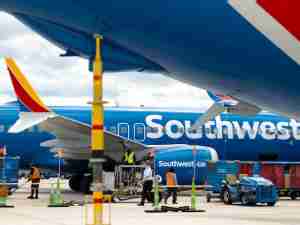The US international airfreight industry had a banner year in 2004, with air shipped tonnage and value to and from the United States showing double-digit gains over 2003, The Colography Group, Inc. said today in releasing its annual International Air Cargo Trends (IACT) report and the International Air And Vessel Cargo By Commodity And Country databases that feed it.
Among the highlights:
- Total US air export weight increased 10.8% to 5.8 billion pounds, while US air imports rose 11.6% to 9.2 billion pounds. The value of US air export shipments rose 12.3% to $235.7 billion, while the value of US air imports increased 12.7% to $346.5 billion. US air export revenue surged 12% to $8.4 billion. UPS, with its acquisition of Menlo Worldwide Forwarding, now leads the air export revenue category. US air export shipments rose eight percent to 85.5 million, led by a 13.8% gain for the US Postal Service, the only one of six major competitors to gain shipment share year-over-year.
- In a key barometer of airfreight's relevance to total US trade, the percentage of total US export tonnage shipped by air rose to 0.74%, a 4.4% increase over 2003 levels and a meaningful gain. US air import tonnage as a percentage of all-mode import tonnage rose 2.8% to 0.43%. Bi-directionally, the tonnage growth in air outpaced the tonnage growth for goods moving by vessel.
- The Australia and Oceania world area was the fastest-growing region for US air exports with a 34.1% gain in tonnage. Asia was the fastest growing area for US imports with tonnage rising 16.5%. The import gains were paced by China, where tonnage to the US soared 31.1%. However, Asian countries comprised four of the 10 slowest-growing US air import origins.
- Venezuela was the fastest-growing country for US air exports, recording tonnage gains of 52.8%, albeit off a relatively small base. It was followed by South Africa and Australia. China was the fourth-fastest growing US air export market'with tonnage up nearly 30% year-over-year--and it generated the largest amount of tonnage among the top 10 US air export markets. Puerto Rico was the slowest growing US export market with an 8.5% tonnage decline, followed by Ireland, Mexico and Thailand.
- The three major air express carriers - UPS, FedEx Express and DHL Express - held a combined 68.6% share of US air export shipments, a slight decline from 2003. The non-integrated carriers (airlines, the Postal Service and freight forwarders) grew export tonnage and shipments at a faster rate than their integrated carrier rivals, while integrators grew revenue faster than the non-integrators. US air export packages and freight recorded double-digit shipments gains. US export air document traffic gained only 2.7% in shipments and lost share year-over-year, reflecting the increasing reliance on e-mail and web services to send communications.
"Our data confirms that 2004 was a stellar year for US international airfreight, certainly the best year since 2000," said Ted Scherck, president, The Colography Group. "Airfreight benefited from a robust replenishment of inventories due to improving demand and a shift in modal usage from vessel as shippers and consignees sought to avoid delays caused by ongoing congestion at US West Coast ports. Air exports were further aided by the affect of the US dollar's decline."
Scherck cautioned observers not to interpret recent softness in airfreight volumes as a sign the industry is headed back to the doldrums.
"We gauge the industry's health not by monthly or quarterly blips, but by trends identified over many years," he said. "Internationally, the long-term trend has been, is and, in our view, continues to be up. What's more, 20+ years of experience tells us a broad re-acceleration as we saw in 2004 does not get reversed quickly, if at all."









